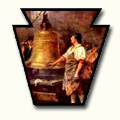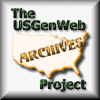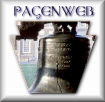| |
92 CLEARFIELD COUNTY - PRESENT AND
PAST
Indian corn was red and white flint. It was ground in
mortars and sifted in a basket, then baked in loaves an inch thick and about six
inches in diameter. They had a way of charring corn so it would keep for years,
by picking the ears while green, roasting, drying in the sun, mixing with about
a third of maple sugar and pounding into flour. This they carried with them on
long trips.
Rawhide and bark were used for straps and ropes. The
inside bark of the elm or bass-wood was boiled in ashes, separated into
filaments, and then braided into rope.
Soap stones were hollowed out to form bowls, and
sassafras wood was often used for the same purpose.
Arms. "Their arms were the war club, the tomahawk,
tomhickaw, the spear, tanganaoun, and for defense says Bishop Ettivein, they
carried a round shield of thick, dried hide. The spear was also used for
spearing fish, which they also knew how to catch with "brush nets" and with fish
hooks made of bone and of the dried claws of birds.
Decorations, etc. The paints and dyes used by the
Lenape and neighboring Indians were derived from red, white and blue clays and
from the juices of various plants; red from the Indian paint root; orange from
the poke; black from a mixture of sumac and butternut bark.
The Indian who had artistically daubed his skin with
red, ochreous clay, was esteemed in full dress, and delightful to look upon.
Hence the term wulit, or walam,—fine, pretty, came to be applied to the paint
itself.
The Indians' feathers and war paint were crude
heraldry. The squaws did the work, they were more apt at it than the braves.
Paint spread upon the face and body indicated the tribe, prowess, honor, etc.,
of the individual and family, and the arbitrary methods employed by the squaws
made their heraldry hard to understand. The facial heraldry was unique
|
|






